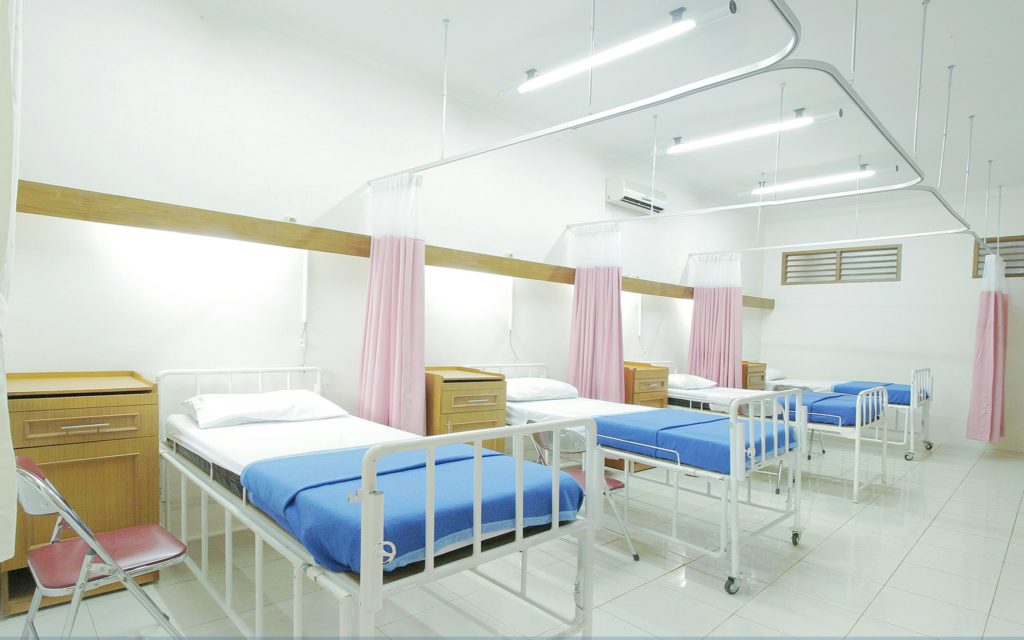While nearly 35 years have passed since Kimberlé Crenshaw coined the term “intersectionality” in her essay, the concept has not gained the prominent role in anti-discrimination law that it deserves. It has become an important tool in understanding individual, structural, institutional and historical aspects that impact equality, and is often referred to in academic discourses and by UN mechanisms. However, it has gained little traction in courts, with only select jurisdictions applying intersectionality in their judgements.
Intersectionality supports the analysis of different systems of oppression that create distinctive experiences of marginalisation and discrimination. Intersectional analysis promotes a comprehensive understanding of contemporary issues where more prohibited grounds overlap resulting in compound discrimination and, therefore, helps to look beyond formally recognised grounds in anti-discrimination law.
The Inter-American Court is the only regional human rights court explicitly applying intersectionality in its analysis and judgements. However, it is important to highlight that while the European Court of Human Rights has never explicitly referred to intersecting identities and vulnerabilities or compound discrimination, it can be inferred that it has considered intersectionality implicitly in several judgements.
In Horvath and Kiss v. Hungary the Court found indirect discrimination as a result of the disproportionately prejudicial effect of laws pertaining to the diversion of students with learning disabilities away from special schools on the Roma community. The applicants were diagnosed with mild mental disabilities as children and were placed in remedial schools with underdeveloped curriculum. This resulted in applicants being isolated from other pupils. The Court contended that: “the education provided might have compounded their difficulties and compromised their subsequent personal development instead of helping them integrate” (§127). It also considered the intersecting grounds of discrimination, when it took note of the domestic courts neglecting to account for the applicant’s “particular vulnerability” inherent to her position as an African woman working as a prostitute in B.S. v. Spain (§ 62) and when it acknowledged the particular vulnerability of children with disabilities in Çam v. Turkey (§ 67). Moreover, in Opuz v. Turkey the Court recognised that the failure of Member States to address gender-based violence amounts to a form of discrimination under Article 14 and infringes the right to life and the right to be free from torture under Articles 2 and 3 of the Convention. It also acknowledged that the discrimination resulted from the applicants’ overlapping identities as women of Kurdish origin living in Diyarbakır (§194). A growing trend in its recent case law suggests that the Court is adopting the “particularly vulnerable” approach when applicants are subjected to intersecting systems of oppression.
Although the Strasbourg Court does not requalify claims on its own motion to bring them under the ambit of Article 14 when applicants have not invoked it, it could do so by applying the jura novit curia principle (meaning that judges are responsible for defining and interpreting the law, including outside of the legal arguments raised by the parties). The Court stated in Guerra and Others v. Italy that it is the “master of the characterisation to be given in law to the facts of the case, by virtue of this principle”.
For the purposes of this blog post, we will imagine how selected paragraphs from the G.M. and Others v. Republic of Moldova judgement might have turned out had intersectionality been considered explicitly. Because even though this case is celebrated as a breakthrough case for disability rights due to the Court embracing an agency-centred approach towards the rights of persons with intellectual disabilities, it misses the opportunity to address overlapping forms of discrimination and its impact on the applicants’ rights. The case concerns three women with intellectual disabilities who underwent forced medical procedures relating to their reproductive rights under state control.
Rewritten paragraphs from G.M. and Others v. Republic of Moldova
84. […] As established by the Court in V.C. v. Slovakia forced sterilisations attain the threshold of severity required to bring it within the scope of Article 3. Considering the ineffectiveness of domestic remedies in guaranteeing the applicants’ right under Article 3 of the Convention linked to the unique position of the applicants, their intersecting identities as women with intellectual disabilities who have suffered involuntary medical procedures while being under state authority, the Court deems it necessary to examine the present case in conjunction with Article 14.
88. […] Legal instruments and reports adopted by the United Nations and the Council of Europe indicate that forced abortion, sterilisation and birth control are forms of gender-based violence, which was found by CEDAW to be a form of discrimination that should be examined under Article 14 of the Convention.
89. […] The invasive medical interventions to which they have been allegedly subjected to combined with their gender, disability, institutionalisation and rape survivors’ status overlap and aggravate the vulnerability of the applicants which is sufficiently grave to come within the scope of application of Article 3 in conjunction with Article 14 of the Convention.
106. […] The inquiry did not factor in the applicants’ vulnerability granted by their gender, disability, internment and rape survivor status. The Court has indentified a number of such vulnerable groups that have suffered different treatment on account of their sex (see Abdulaziz, Cabales and Balkandali v. the United Kingdom, §78), sexual orientation (see Schalk and Kopf v. Austria, § 97), race or ethnicity (see D.H. and Others v. Czech Republic, § 182), mental faculties (seeAlajos Kiss v. Hungary, § 42), or disability (see Glor v.Switzerland, § 84). The Court reiterates that persons with intellectual disabilities are a particularly vulnerable group in society, who have suffered considerable discrimination in the past (see Alajos Kiss v. Hungary, §42) and has recognised them to have suffered a history of prejudice and social exclusion (see Kiyutin v. Russia, §48, §63). In the present case the applicants represent more than one group that is particularly vulnerable and as stated previously (Çam v. Turkey, §67), such particular vulnerability cannot be overlooked, but should be considered in determining a breach of Article 14.
The Court takes note of the CEDAW’s findings in its Concluding Observations on the combined fourth and fifth periodic reports of the Republic of Moldova, where it expressed concern pertaining to the marginalisation of women with disabilities and their vulnerability to intersecting forms of discrimination, particularly those in residential institutions, where they are at high risk of abuse, including sexual assault. The Committee underlined that such acts often go unreported and that perpetrators are rarely brought to justice (§37). The Court also acknowledges the Committee’s on the Rights of Persons with Disabilities concluding observations on the initial report of the Republic of Moldova, where it expressed concern about reports of forced contraceptive measures, including forced sterilisation and abortion, particularly involving women with psychosocial and/or intellectual disabilities, especially those still in residential institutions (§34). The above suggest that this was not an isolated incident, but rather part of a systemic practice disproportionately affecting institutionalised women.
107. The inquiry failed to account for the intersecting characteristics of the applicants (gender, disability, internment), creating a distinct set of hardships for the applicants to overcome in order to assert their rights. Additionally, pregnancy, abortion and post-partum are all conditions that can affect one’s mental and physical health further, heightening their disadvantage, which in turn increases the risk of being subjected to discrimination. The above mentioned considerations suggest that the applicants’ claims were not afforded the attention required under Articles 3 in conjuction with Article 14. The pervasive false belief that women with intellectual disabilities should not bear children, is attested by the fact that the mere existence of an intellectual disability constituted a legal ground for termination until 2020.
108. The combination of their gender and intellectual disability coupled with the power imbalance, dependency and isolation rendered by the internment, is of sufficient gravity for the Court to determine that the national authorities did not carry out investigations available to them, did not take all reasonable measures to establish the facts of the present case and did not undertake a full and careful analysis of the evidence before them.
Conclusion
The Court’s apprehension in expressly embracing intersectionality can account to the fact that in doing so it would have to depart from its ground-based approach and “discrimination test” requirement and it would have to develop clear guidelines in terms of positive obligations of due diligence. Additionally, the open-ended nature of Article 14 may encourage the Court to justify not adopting an intersectional analysis as such, as one might argue that intersecting vulnerabilities or newly emerged grounds of discrimination can still fall under the remit of “other status”. That may cover “additional grounds” but does not address compound discrimination that occurs because of intersecting systems of opression. Intersectionality does not necessarily imply comparing in the present instance the applicants to a non-institutionalised woman or a disabled man or a non-disabled rape survivor. Rather, it centres around understanding the lived experiences of persons at the intersection of distinct discrimination and the obstacles to equality that they encounter as a result.


